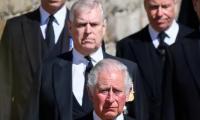the Murree moot.
In fact, Mulla Omar has been the subject of death rumors repeatedly ever since he had fled Kandahar on the back of a motorcycle, in December, 2001. He was first believed to have been killed by the US-led Allied Forces soon after they had invaded Afghanistan in October 2001 in a missile attack. But it later transpired that he had escaped unhurt when his hideout was struck by a missile that killed one of his sons. In October 2008, the BBC had claimed that Omar had been killed in a US drone strike in the Pak-Afghan tribal belt. But it later emerged that the dead man was a lower-level Taliban leader, sharing the same name. In January 2011, The Washington Post reported that Mulla Omar had suffered a massive heart attack on January 7, 2011 after which he was rushed to a hospital in Karachi.
On May 23, 2011, almost three weeks after Osama bin Laden’s killing in Abbottabad, a private television station in Afghanistan, TOLO had reported that Mulla Omar has been killed in an attack while travelling from Quetta to North Waziristan. But the Afghan Taliban spokesman Zabihullah Mujahid had rejected the report and asserted that Omar was in Afghanistan and not in Pakistan. Islamabad also refuted the report as baseless. Almost 24 hours later, on May 25, 2011, the Afghan intelligence agency had claimed that Mulla Omar was in the custody of the Inter Services Intelligence (ISI) and that after Osama Bin Laden’s killing, the wanted terrorist has been abstained from making any contact with his commanders in Afghanistan.
In June 2011, Canada’s National Post had reported that the Taliban commanders were doubtful that Omar was still alive. The Taliban spokesman Zabihullah Mujahid denied the report, saying he was safe and sound in Afghanistan, blaming the United States for the rumors. “This is the propaganda by the enemy to weaken the morale of fighters”, he added. Despite this, however, the rumors returned again in July 2011 after some text messages were sent by some Taliban officials. The Taliban had once again refuted that Omar was dead and denied that they had even sent the text messages, calling them the work of hackers, possibly American.
In November 2014, Afghanistan’s National Directorate of Security (NDS) was cited as the source for a claim that Mulla Omar has been killed following infighting within the Taliban ranks for control of the group. The National Directorate of Security spokesman Hasib Sediqi told reporters in a press conference on November 19, 2014 in Kabul that Mulla Omar has died during infighting and senior Taliban figures have been divided into three groups due to internal differences.
But hardly a month later, on December 23, 2014, Aimal Faizi, the spokesman for ex-President Hamid Karzai said that Mulla Omar was in the custody of Pakistani security forces and being kept in Karachi. “The current Secretary of State John Kerry who was serving as the US Senator, had shared the issue with President Karzai during a meeting in Kabul,” Faizi told BBC. A week later, on December 30, 2014, the then acting Afghan intelligence chief Rahmatullah Nabil was quoted in The New York Times as saying: “There is a lot of doubt whether Mulla Omar is alive or not. But we are more confident that he is alive and living in Karachi,” Nabil was quoted as saying regarding Omar’s whereabouts.
Following the December 2014 withdrawal of US-led Allied Forces from Afghanistan, questions were raised in the Western media as to why the reclusive ameer of Afghan Taliban remains missing from the scene despite Pentagon’s clear cut declaration that the remaining American forces in Afghanistan won’t target Mulla Omar and other Taliban leaders unless they pose a direct threat to the United States of America. On April 2, 2015, the Islamic Movement of Uzbekistan (IMU), which had long recognized Mulla Omar as its ameer, issued a public statement asserting that Mulla Omar was dead and that it was thus shifting its allegiance to the Islamic State. It was the eighth time since 2001 that Mulla Omar was declared dead. However, the Afghan Taliban published a descriptive biography of Omar in the first week of April 2015 which was aimed at establishing that their ameer was alive and well and in control as their supreme leader.
The biography described him as being actively involved in jehadi activities, dispelling speculation that he had died. “Mulla Mohammad Umar Mujahid is still the leader in the present hierarchy of the Islamic Emirate of Afghanistan. Additionally, Omar has a deputy, the leading council [known as the Quetta Shura], judiciary, nine executive commissions and three other administration organs that are active under his leadership which form the warp and woof of the present setup of the Islamic Emirate.” The Taliban statement did not name Mulla Omar’s deputy or the leaders of its other branches. Omar’s deputy serves as Omar’s operational chief, according to the Taliban statement. “The deputy of the Islamic Emirate, besides inspecting and assessing all the subordinate organs, conveys their working reports to the ameerul momineen and communicates the orders and decrees of the leader to all the concerned organs and authorities,” the Taliban statement said.
In his last and most significant message [on July 15, 2015] after which he was declared dead, Mulla Omar had endorsed peace talks with the Afghan government and assured his fighters that he would not negotiate to the detriment of their interests. In his annual Eid message, Omar had defended the dialogue as ‘legitimate’ and ‘integral part of prophetic politics’. This was the first public endorsement by the Afghan Taliban ameer of the dialogue process with the Afghan government that began in Murree on July 7, 2015. The peace talks had enabled the first real face-to-face talks between the Afghan Taliban and Kabul. The endorsement message by Omar indicated a paradigm shift in his stance on war and peace in Afghanistan. His approval of peace talks marked a clear deviation from Taliban’s previous hard-line position of shunning any interaction with the Afghan government.
But on July 23, 2015, hardly a week after Mulla Omar had purportedly endorsed the peace talks, a splinter group of the Afghan Taliban - Afghanistan Islamic Movement Fidai Mahaz - claimed on Facebook that he had been killed two years ago by two senior Taliban leaders, Akhtar Mohammad Mansoor and Gul Agha Ishakqzai. The group’s spokesman Qari Hamza said Omar was killed in 2013 and that the group has evidences to prove their claim. But no evidence has so far been made public by the group. Also, the Afghan Taliban appeared to have not taken seriously the Fidai Mahaz’s allegations that Omar had been killed by Gul Agha Ishakzai and Akhtar Mohammad Mansoor since Taliban Shura has already unanimously appointed Akhtar Mansoor as the new interim ameer.
Subsequent media reports said that an internal power struggle has flared up among the Afghan Taliban as its de facto head Akhtar Mohammad Mansoor is facing a rebellion by certain key military commanders amid uncertainty about the fate of Mulla Omar. As per these reports, opposition to Akhtar Mansoor, the deputy leader of Afghan Taliban, is centered on Mulla Mohammad Yaqoob, the eldest son of Mulla Omar. The 26-year-old Yaqoob had reportedly graduated last year from the Jamia Binoria - a well-known Karachi-based seminary - and is ready to take over the Taliban leadership in case the death of his father is confirmed and Taliban Shura and rank and file so decided. Those challenging Mulla Akhtar Mansoor’s dominance of the Afghan Taliban movement are reportedly promoting Yaqoob as a legitimate and worthy successor to his father, Mulla Omar.
Going by unconfirmed media reports, the differences between the two competing sides came to an end when Akhtar Mansoor had dispatched a Taliban delegation to Murree to hold peace talks with the Afghan government on July 7, 2015 on the persuasion of the Pakistani authorities and then managed to release an Eidul Fitr message from Omar, endorsing the peace talks. While there are those in the Afghan government circles who insist that Mulla Omar had died two years ago and the Taliban had been faking his messages since then to keep him alive, there are those in the Pakistani establishment circles who do not rule out the possibility of the elusive Taliban ameer staging a sudden comeback at some point through an audio or video message to surprise his detractors in a big way.
Demonstrators criticise introduction of a token system at the Kuntani border
He says bunkers would be demolished and weapons collected to restore peace to the area
Special Judge Central Shahrukh Arjumand conducts hearing at Adiala Jail on Friday
PN flotilla was led by Commander 14th Destroyer Squadron, Commodore Muhammad Umair
ATC Special Judge Amjad Ali Shah approves her bail until January 13
Labourers also join sit-in, bringing their pushcarts to highlight their plight







